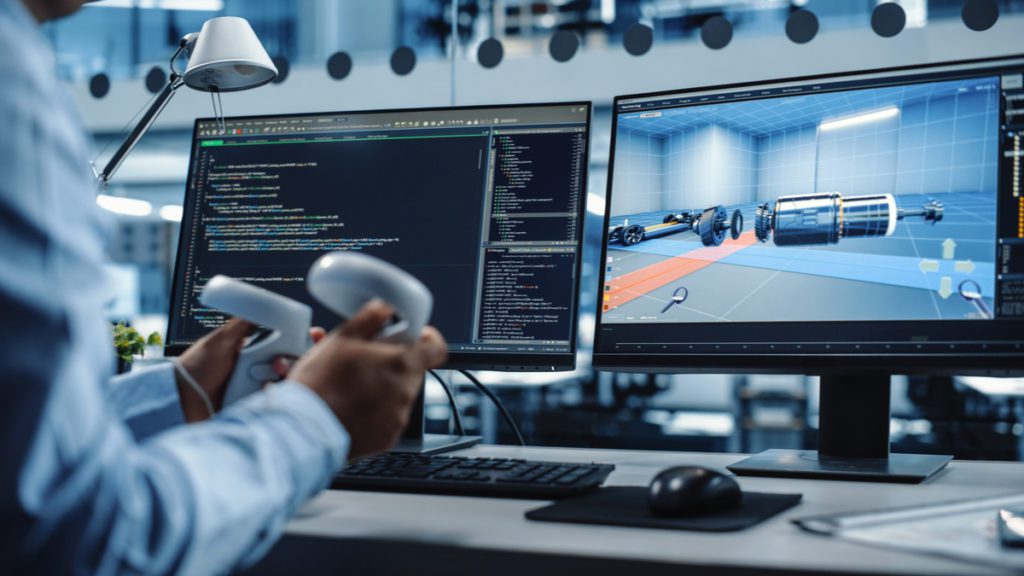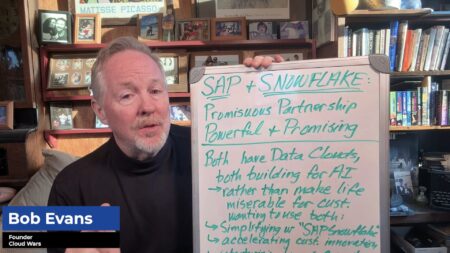I’ve been intrigued by the recent news about the Metaverse. Though many have dismissed the reports as overblown hype, I’m still curious about any new technology that major corporations are pouring this much money and resources into. While much of the Metaverse discussion has centered around consumer use cases, as CIO of a mid-market manufacturing company, I’d like to know how these technologies will impact business and industry.
Which Metaverse Interface Is Best for Manufacturing?
I also have a lot of questions about which type of interface into the Metaverse makes the most sense for manufacturing. Although, fully immersive Virtual Reality (VR) headsets are cool, are they practical for the shop floor? It seems like a dangerous proposition while working around heavy machinery. Mixed Reality (also called Augmented Reality or AR) devices, on the other hand, have the potential to bring the Metaverse into the real world, overlaying one on top of the other without losing sight of your surroundings, such as factory equipment.
Recent news from Microsoft would seem to add weight to the viability of an AR entry point into the “industrial Metaverse.” The company announced that robot manufacturer Kawasaki will use the Microsoft HoloLens headset to “overlay digital imagery in a real-world environment” by creating a “digital twin of a workspace, which can speed up processes like repairs and starting new manufacturing lines.”
One typical use case is to allow repair people to chat with on-site workers and give them visual cues using the AR functionality. At the 2022 Build conference, Microsoft CEO Satya Nadella described this industrial Metaverse and how companies are taking advantage of tools like HoloLens for mixed reality solutions. Check out the short video here.
Microsoft is proving to be a true leader in this space by bringing together multiple products and technologies for the purpose of delivering mixed reality solutions. For example, Dynamics 365 Guides utilizes HoloLens to deliver “step-by-step holographic instructions to use where the work happens.” And Dynamics 365 Remote Assist allows you to “share your real-time view with experts remotely to get the help you need, and stay hands-free.”
Mixed Reality Devices and Solutions Worth Checking Out
HoloLens 2: Microsoft’s device is one of the best, but it’s also quite expensive.
Iristick: Smart glasses for industry, with use cases for remote assistance, barcode scanning, digital workflow, and videoconferencing.
Magic Leap 2: Not yet available for sale; takes the original Magic Leap 1 to new levels with an Enterprise-ready headset designed to support modern manufacturing.
Epson Moverio: Smart glasses. It’s not clear whether anyone has adapted these specifically for industrial use, but the lightweight design seems like it would be very accessible and not tiring for someone working on the plant floor.
Meta Quest 2: This system, formerly called Oculus Quest 2, has typically been used for fully-immersive VR in the past, but has begun to offer mixed reality modes using something they call Passthrough API.
Google Glass Enterprise Edition 2: Another lightweight device that should be comfortable for all-day use. There are some commercial solutions such as Picavi which put Google Glass to work for industrial use cases.
Kognitiv Spark: They don’t make their own glasses, but their solutions are designed to work with Microsoft HoloLens, with use cases like repair and maintenance, remote inspection, quality assurance, and on-the-job training.
Final Thoughts
While it would be tempting to dismiss the Metaverse entirely, based upon the demonstrations of cartoon-like virtual worlds where everyone lives and works and socializes, I’m keeping an open mind about how the technologies that are being built for that consumer-focused future could enable manufacturers to improve processes, lower costs, and speed time to market. As more and more companies jump on the Metaverse bandwagon, it will be interesting to see which ones are able to produce real enterprise-ready solutions that bring value to manufacturers right now.
Want to compete in the Metaverse? Subscribe to the My Metaverse Minute Channel:










